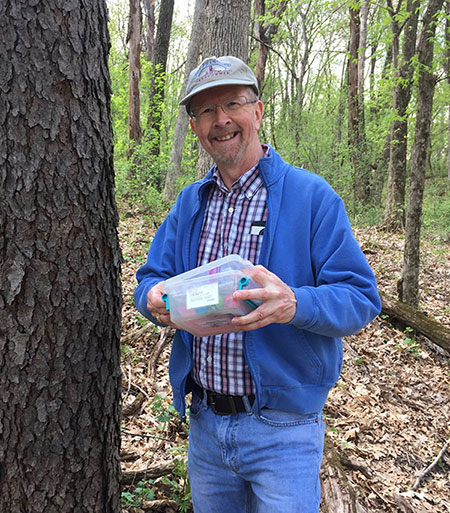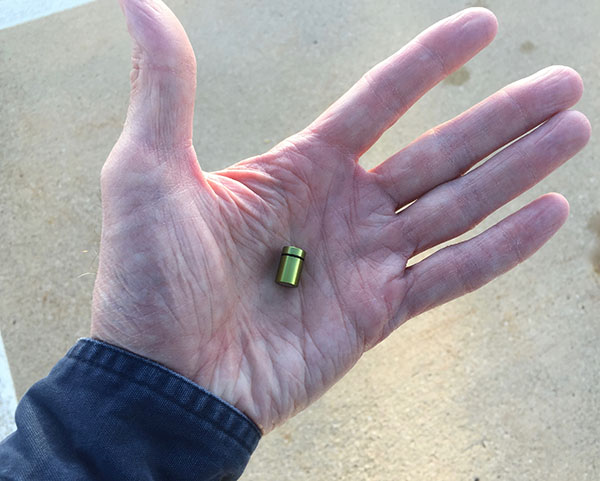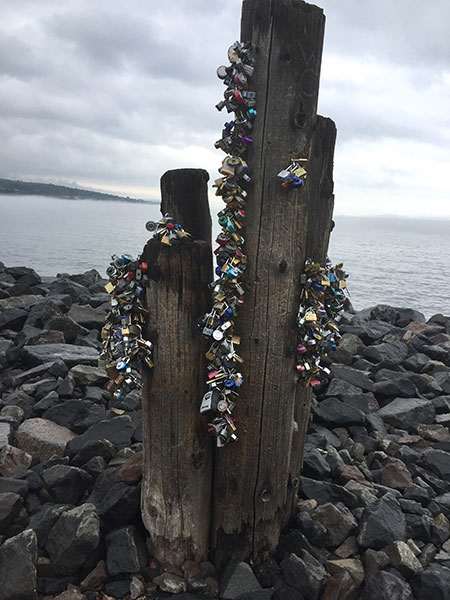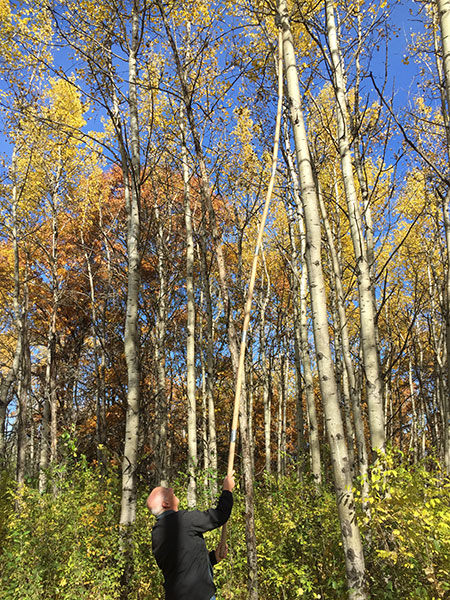Why was I crawling through a frozen sewer pipe on my hands and knees in the middle of winter?
I was geocaching, my latest obsession.
If you haven’t heard of geocaching, it’s a worldwide treasure hunt using GPS to locate hidden containers called geocaches. There are literally millions of geocaches hidden around the globe. When I first started playing, I was delighted to discover that there were several within walking distance of my townhome.

What exactly is a geocache? It can be as simple as a plastic Tupperware container with a logbook inside to record your name. Part of the fun of geocaching, however, is the creative ways in which these caches can be disguised. I’ve been geocaching for just over a year now and some of the more than 500 containers I’ve found include:
- a ceramic gnome hidden inside a hollow tree
- a secret drawer built into an ornate Little Free Library
- an artificial rock beneath a busy bus stop bench
- a birdhouse on the porch of an antique store in rural Wisconsin
- a hollowed-out book on the shelves of the public library where my writing group meets
I’ve found geocaches as small as my fingernail and as large as a garbage can, and every size in-between.

It unscrewed to reveal a tiny logbook inside.
Who hides all of these caches? Anyone can, once they’ve learned the basics of the game.
I tend to get stuck in familiar ruts, so for me, one of the greatest joys of geocaching has been all the new places I’ve discovered. I’ve been to parks and walking trails in my own hometown that I never knew existed. While I’ve been on vacation, geocaching has taken me to historic buildings, stunning scenic overlooks, and unique parts of the city I would have never otherwise discovered. Whenever I give an author presentation out of town, one of the first things I do is check to see what geocaches are in the area. I always discover something new.


Who knew I was in the lutefisk capital of the country?

but which one?
Are you feeling adventurous?
It’s easy to get started. All you need is a device with a GPS app, such as a smartphone. Go to geocaching.com and set up a free account. Then type in a location and you’ll be shown a map of all the geocaches in the area. Each geocache is rated with a difficulty level from 1 (easiest) to 5 (most difficult) so you can choose the degree of challenge you want.
Following the map should bring you within ten feet of the geocache. That’s when the hunting begins. Is the cache inside that hollow stump? On the back of that stop sign? Hanging from a tree branch? Clues in the online description will help you narrow your search. And then suddenly…you spot it! I still haven’t grown tired of the burst of adrenaline I feel each time I discover a new cache, hidden to everyone else in the world except for me and my fellow cachers.

To reach it, he used a 24-foot pole we constructed from empty cardboard tubes.
Once you find a geocache, sign the log, replace it exactly as you found it, and then search for another. Everything I needed to know in order to find my first cache I learned by watching this short YouTube video. Be warned, however. Geocaching can be addictive. I know folks who have found more than 20,000 caches and are still going strong!
Geocaching is a hobby for all ages and abilities. My eight- and eleven-year-old great nieces love the lure of finding the inexpensive trinkets located inside some of the larger geocaches, while retirees have told me it’s a fun way to get exercise.
Ready to discover a new park, a new trail, or just a new section of your neighborhood? Then try geocaching! And don’t worry. You won’t have to crawl through a sewer pipe…unless you want to.

I cannot wait to try this! And maybe even create a cache of my own that you’ll have to track down, David. 🙂
You — and your daughters — will have a lot of fun, Aimee! And I look forward to finding a cache hidden by YOU!
What fantastic fun, David! Seeing the world one hidden treasure at a time!
Whenever I go anyplace now, Lisa, I’m always looking around and wondering if there is a geocache hidden near!